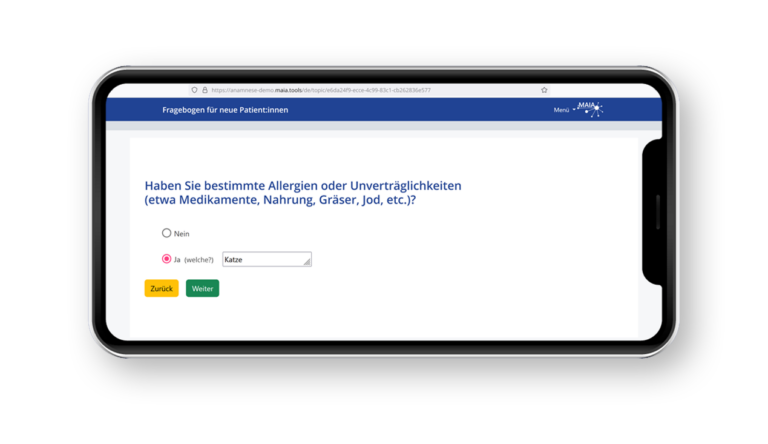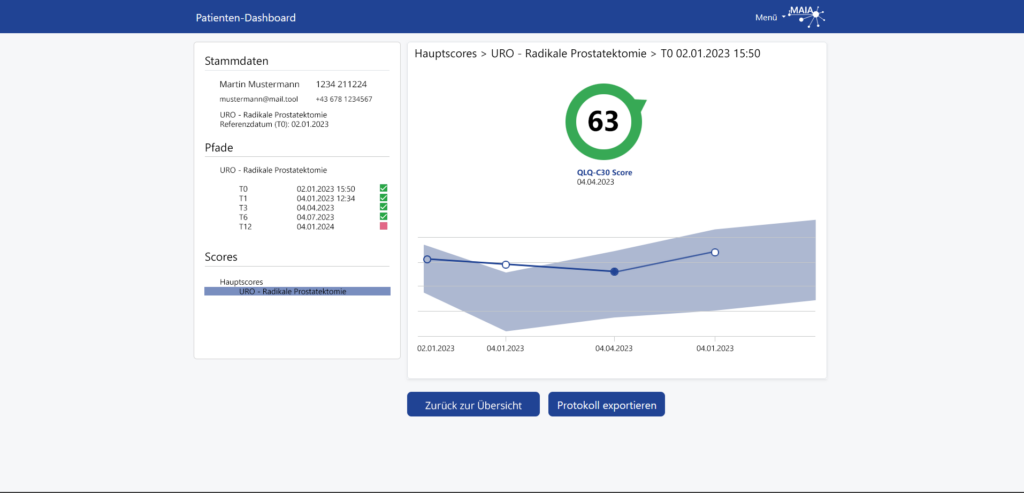Undoubtedly, surveys like PROMs (Patient Reported Outcome Measures) focus on patient well-being and, by definition, serve as a tool that centers around people. However, used as mundane paper questionnaires or sterile online surveys, they often fail to meet this expectation - from a patient’s perspective. This is not only unfortunate but also a missed opportunity, since targeted improvements can shape Patient Reported Outcomes in a way that allows patients to understand their benefits and even derive individual value from them.
Done with a swipe?
'Done with a swipe' is a common criticism aimed at the so-called 'internet generation.' This may be an exaggeration, but it holds a grain of truth. Many persons, not just the young, are accustomed increasingly to quick and easy interactions. Most people up to about 70, who spend a lot of time online, are familiar with this phenomenon. They prefer things that are simple and efficient, especially if there is no personal benefit. Yet, we still have to deal with outdated processes like mailing questionnaires, printing and carrying PDFs to postal services, or filling out poorly designed online forms that feel like they are from the '90s. These old-fashioned methods can be frustrating.
Applicable to PROMs: good usability improves response rates
Concerning patient questionnaires like PROMs, low-threshold accessibility is of crucial importance. As with many clinical studies, response and dropout rates are central challenges. The following functionalities can help address these issues:
- Simple digital processes that require just a few clicks can make a big difference: sending, completing, and returning forms with just one touch. This also includes things like electronic consent (eConsent).
- Decentralized electronic data capture (EDC) systems that work anytime and anywhere. Solutions that are device-independent and accessible through a web browser (BYOD - Bring Your Own Device) are favorable.
- Perfect usability adapted to the target group (especially for old people).
- Multilingual content: this is particularly important in metropolitan areas and in relation to health literacy.

'Common language'
Undoubtedly, considerable effort is required to scientifically validate questionnaires. However, for PROMs, this alone is not enough. To prevent patients from feeling reduced to mere data sources, it is essential to focus on developing a common language and effective communication (for further information on the concept of 'common language' see also the H2O Whitepaper) to bridge the gap between patients and scientific terminology. This approach should be integrated throughout the entire communication process, starting with something as simple as a text message containing a link to a questionnaire. Key elements to consider include:
- Clearly communicate the importance and purpose of the entire survey and each individual question in a way that patients can understand and appreciate.
- Use a tone that is warm and respectful, avoiding overly technical language or formal jargon that might come across as impersonal.
- Share information with patients in a structured, useful manner. For instance, showing progress in recovery and providing graphical evaluations of PROM scores can be motivating.
The final point is perhaps the most significant benefit that patients can experience directly. When progress in recovery and evaluations of PROM scores are presented in a clear and visually appealing way, they can be paired with specific tips and informational modules. Ideally, for long-term assessments, this approach not only offers valuable feedback but also encourages individuals to engage more actively in their healing process.


